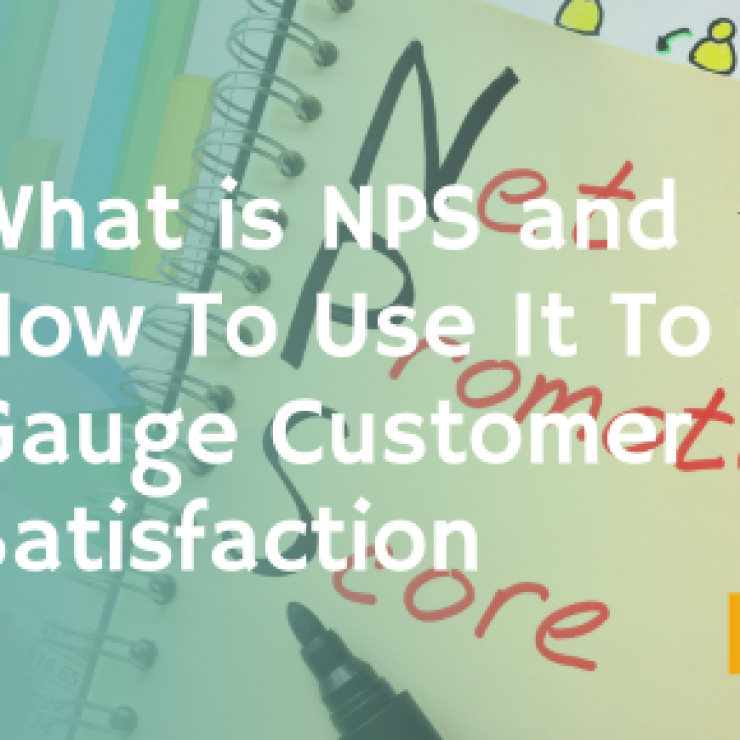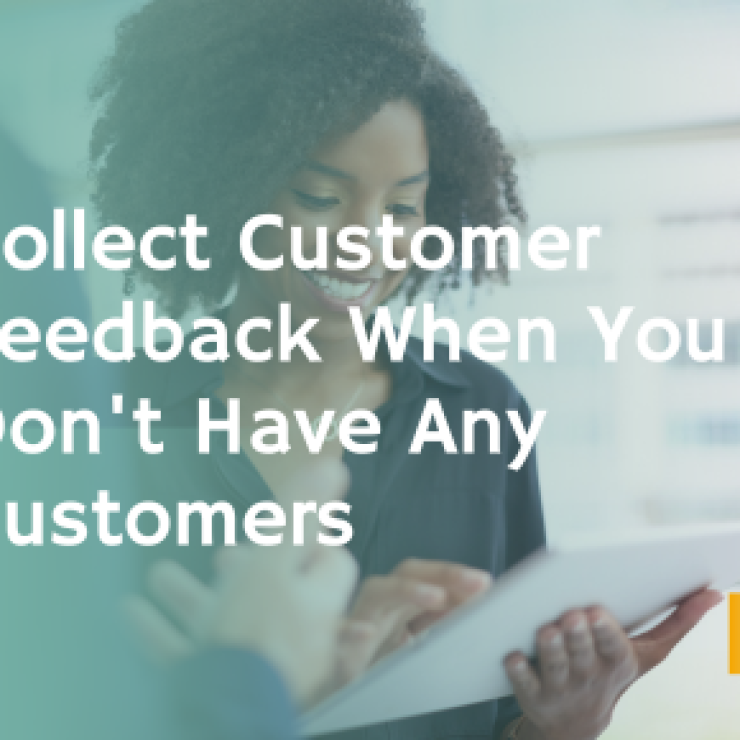Each product roadmap is full of unexpected twists, but customer input can be a guide. You can delight your customers and provide value to your company if you know exactly what they want.
You can use customer feedback as a guide to your product development. However, you must have a process for gathering and implementing it. You can identify the most important changes and make sure that you take action on any negative feedback. This will help you get closer to creating a valuable and profitable product.
Collecting Customer Feedback
Gathering feedback from customers across your company is the first step to improving your product. You can either collect customer feedback passively or actively. You can get feedback from customers who are satisfied, complaints, new features, bug reports, fixes and testimonials.
It doesn’t matter what source you use; it is helpful to channel customer suggestions through one customer feedback tool. All team members and departments can share this tool. It creates a common understanding of customer experience and makes it easier to manage and triage requests. You can also examine feedback in real time within the same tool, making product feedback analysis easier.
Collect from Your Passive Feedback Channels
Unsolicited passive user feedback comes from the heart. This feedback comes from customers reaching out directly to your company without you asking.
You can get passive feedback from many channels.
- Online reviews
- Conversations with customer success (via chat, email, or phone)
- Direct messages and comments on social media
- Potential customers have given feedback to your sales team
- In-app feedback
- Analytics for marketing that shows the customer journey
- Product analytics that tracks usage trends
You should consider creating passive feedback channels if you don’t already have them. These are easy ways to communicate with customers. Give customers the option to leave star ratings or reviews or begin collecting data about how customers use your product.
Collect Active feedback
Direct customer feedback is sought. Companies, in a targeted effort, seek this type of feedback. It’s generally used to answer specific questions or gauge customer satisfaction.
There are a few options available for active feedback collection:
Customer Feedback Surveys – Email and customer satisfaction surveys (like NPS) help you gather the information that matters to you. You can learn about customer sentiment – the attitudes and feelings of your customers about your product by collecting answers. You can use customer sentiment to identify areas for improvement.
One-on-1 interviews: Customer interviews provide a great opportunity to ask your customers deeper, open-ended questions. Although these conversations might not have a specific agenda, they allow you and your customer to get to know each other better. A one-on-one conversation is a great fit if you require more context and detail to understand the customer’s perspective.
Focus groups: These groups allow you to ask deeper questions but in a more structured format than an interview. Focus groups are a way to get customer feedback in a group setting. Each participant can influence the opinions and views of others. Focus groups are great for situations when you need honest, unvarnished feedback from customers (who might be less inclined to give negative feedback in a one-on-one setting).
Validation tests: Before making any product changes, getting feedback from your customers is important. You can gauge how likely your changes will address customer pain points by running short, scaleable validation tests before you add new functionality or features to your product.
Customer advisory panel: An advisory board is a group that has been hand-picked and influential customers. They can be consulted when you need information about industry trends, company goals or upcoming product launches. Customer advisory boards can be a great option when you need to talk with industry experts about big-scale issues that affect your product vision and strategy.
Each of these options allows you to speak directly with your customers and ask them the questions they need to answer. Your approach can be targeted around a particular situation in that you require actionable feedback, such as gathering feedback about a new feature or before it is developed.
Your customer feedback strategy should include active feedback collection. Regular touchpoints allow customers to share negative or positive experiences with you.
Customer Feedback
Customer feedback is valuable because it allows you to gain a deeper understanding of customers’ problems and provides a starting point for how to address them. Every piece of feedback will tell you what to fix, add, remove, and update on your product to meet customers’ needs.
You probably don’t have the time or resources to respond to every piece of feedback that you get. It’s impossible to do everything, and neither should you. If you are addressing a customer’s specific request, you will need to take on a new project.
You may also need to involve your product engineering team in the development of your product. The product marketing team might be tapped to help you develop a promotional plan or update your messaging regarding your product changes. Before you decide to make a product change based on customer feedback, weigh all options.
Saasfe follows the Ice Scoring Model in order to prioritize customer feedback. We look at:
- The impact each request will likely have
- The confidence we have in our ability and capability to respond to that request.
- The simplicity of doing this (or the effort required by our team)
Search for the Most Effective Suggestions
You won’t have the time or resources to respond to every customer’s feedback. You can focus your efforts on the requests that impact customer satisfaction and/or strategic goals.
There are several ways to determine which requests will have the greatest impact.
- Take a look at the frequency and popularity of feedback. It is possible to get valuable feedback if several customers have had the same bad experiences or you receive the same feature requests frequently. A voting system or rating system is one of the customer feedback tools that allows you to see how popular a request is among your customers. You can spot high-frequency requests by organizing feedback based on their content.
- Assess the potential impact on your revenue. High-value customers may agree to a request or a complaint. This indicates that your revenue can be significantly affected if you take action. Saasfe Discovery integrates Salesforce data to make it clear that feedback is connected to account-based revenue.
- Redirect customer complaints about your product’s core function. If you get a complaint that your meeting planning software is not compatible with popular calendar tools, it’s likely that this will have a significant impact on the success of your product.
Find out if the feedback fits your product strategy
You may desire to provide exactly what your customers want, but some product changes will not fit your overall strategy or vision.
Consider whether the feedback you are receiving would be in line with your strategy. If so, how much? These questions are subjective and can make them feel difficult to answer.
But, making changes that are not in line with your strategy could disrupt your long-term product plans and slow down your work in other departments as they adjust to your new needs. You may not be able to scale or provide value for your company if you make one-off changes that are not in line with your product roadmap.
Sometimes, addressing one piece of feedback can be beneficial in turning unhappy customers into satisfied ones. This is a powerful motivator for any customer-focused product manager. In these situations, it is important not to give people what they want without first evaluating and researching the issue.
If you have received feedback about your product’s price, consider your guiding strategy carefully before changing it. It’s possible to change your pricing to fit your product and help you attract new customers. But it’s not something to do lightly.
Possible Solutions
The final piece of the product management puzzle is finding feasible solutions that meet customer needs, align with your strategy and add value to your product.
Get creative with solutions to customers’ concerns. Next, determine your confidence in each solution. What is the likelihood that your solution will solve the problem? How likely are you to make your customers and company happy with it? This concept of confidence is subjective. However, if you have collected data, you can determine an objective confidence level from your results.
Research is a good practice. To validate your solutions, you can have check-ins with customers. You may be able to make a prototype of the problem that you are trying to solve and then show it to customers to see how they react.
Will then collaborate with product engineering to assess your solution’s feasibility. Sometimes there isn’t enough time to update the product. However, that doesn’t mean you have to give up on your solution. Your engineering team may be able to work on your project if they have the development cycles.
How to Handle Negative Customer Feedback
Negative feedback is difficult to handle, especially for new product managers. Negative feedback from customers can still provide valuable insights into product design. You will need to identify the problem and develop a plan of attack.
Remember that negative reviews and comments from unhappy customers are about their experience with your product, not you. Don’t dwell on the negative reviews or dwell on the customer’s poor experience.
Find the Problem
You must first understand why the customer is complaining before you can correct it. This problem is not always easy to solve.
Imagine that you notice a rise in negative customer reviews after receiving new subscriptions. A bad review could explain why new subscribers are churning. Perhaps your product was plagued by a bug that customers were unhappy with. Negative online reviews can indicate other problems.
- Unintuitive and confusing UI
- Poor customer support
- Customers who don’t achieve the desired results with your product
- Misaligned outreach campaigns that target or attract the wrong segment
The validation process will help you identify the root cause of the customer’s problem. You’ll need to understand the cause before you can fix it. Try:
- You can find a shared theme by looking at the reviews and comments you have already received.
- For more information, ask customers directly
- Customers are surveyed with questions that help them get to the root of the problem.
You must understand what is causing your customer’s problem so you can address it effectively.
Negative Feedback after a Failure Launch
Negative customer feedback can be generated when a new product or feature launch is not successful. This feedback can seriously affect your company’s growth and revenue goals. It can be even more difficult for product teams to handle.
A contingency plan is the best way to avoid the shock and disappointment of an unsuccessful launch. You can identify the success indicators you can use to spot wins and losses early.
- Customer adoption
- Customer retention rate
- Sales figures
- Product usage data
Before launching your product or feature, make sure you thoroughly test it. Get feedback from customers about the first iteration. Then, make smart changes based on what you hear. This prep gives you the ability to plan for a successful launch and then make changes based on what your customers tell you.
Customer Feedback
The final step in a thorough customer feedback process is to close the customer feedback loop by following up with those who share their opinions. Follow-ups let customers know you value their time and appreciate their feedback.
You will also take responsibility for any problems. Your customers should feel happy with your products, and you will follow up to show them. A strong brand reputation can be enhanced by a focus on quality. This could encourage unhappy customers to return to you for a second chance.
People want to be heard. It is great to tell customers that your feedback has led to product updates. Customers also appreciate hearing from you, even though you may have to inform them that they cannot address their problems right away. Customer feedback is a great way to increase customer loyalty.
If you respond to feedback:
- Get in touch with your customer quickly: A quick follow-up to feedback lets the customer know you value their opinions. This shows that you value customers’ opinions and are committed to delivering a product that fulfills their needs.
- Thanks to them for their feedback. Customer feedback is valuable. Customers should be thanked for their feedback.
- Tell them what your next steps are. Do not give them specific deadlines but let them know if you are considering their suggestion. You can share your knowledge if it’s not possible. People understand that you cannot do everything.
- Inform customers about the status of their feedback. Let your customers know that you are making progress with their feedback requests. Either you can contact customers manually to inform them about an update or use an automated system to alert customers to any changes or new features related to their feedback.
- Schedule a one-on-1 meeting with your customer: If they are still unhappy after you have said “no,” offer to meet up by phone to discuss the matter. You can help repair a customer relationship by giving your honest opinion and being transparent about the reasons behind the “no.”
- Get in touch with them again later. Keep the lines of communication open with customers and offer to get in touch with them within a few months. This is a great opportunity to check with them to see if they have any new problems or to inform them about product updates that you were able.
Use Saasfe Discovery to Create Complete Customer Feedback
Saasfe Discovery allows you to collect, organize and share customer feedback about your product. We assist you in managing the customer feedback process to address your customers’ needs and concerns.
Our integrations give you a complete picture of how customers feel about your product. You can see the impact of each suggestion on your product and customer feedback. Sign up for a free trial of Saasfe to streamline your customer feedback management.




